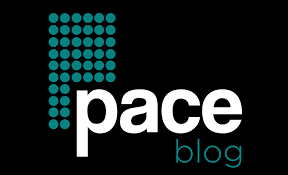Losing talent you’ve heavily invested in building up is a costly blow on multiple fronts – tangible and intangible. However employee turnover need not be a black hole if organizations tap into rich insights from purposeful exit interviews upon resignations.

What are Exit Interviews?
Exit interviews refer to constructive discussions HR managers or direct supervisors facilitate with voluntarily resigning or downsizing employees on their last day. The goal is to understand the predominant factors influencing their decision to leave while soliciting suggestions on enhancing policies and culture.
This candid feedback spotlights areas for improvement across:
Management & Leadership: Poor approach, inadequate support.
Company Culture & Work Environment: Office politics, lack of work-life balance, boredom from repetitive work.
Career Growth: Stalled progression, outdated skills building, favoriteness inhibiting promotions.
Compensation & Benefits: Salary dissatisfaction, reduced bonuses or perks.
Job Design & Workload: Unclear objectives, monotonous tasks, excessive output expectations.
Why Conduct Exit Interviews?
Beyond diagnosing reasons for resignations, well-handled exit interview questions and answers generate invaluable data, such as:
Pinpoint Retention Barriers: Delve into departure catalysts beyond superficial explanations through honest feedback.
Refocus Retention Efforts: Identify patterns around culture, and manager capabilities. losing talent to craft targeted interventions.
Salvage Employer Branding: Maintain positive relationships with talent connections despite exits.
Boost Employee Morale: Employees feel valued knowing leaders invest in continually improving their experience.
Understand Transition Support Needed: Determine knowledge, resources, and training existing employees need for continuity.
Meet HR Analytics Needs: Robust employee lifetime cycle analysis requires sufficient turnover data.
How to Conduct Effective Exit Interviews
Follow these eight best practices to ensure your exit interview approach works:
-
Planning and Preparation
Strategically plan your process for consistency and transparency:
Standardize a Format: Maintain a structured discussion flow and question line-up aligned to data capture needs that interviewers consistently execute.
Train Interviewers: Ensure HR personnel demonstrate empathy, and active listening without judgment and keep discussions conversational.
Schedule Thoughtfully: Allot time conveniently on the last day to capture fresh feedback before work rhythms change but avoid disruptions.
Guarantee Anonymity: Promise discretion regarding individual responses to encourage open sharing without fear of repercussion.
-
Set the Right Opening Tone
Welcome departing employees warmly and set a friendly tone upfront through:
Positive Framing: Start by thanking them for their contributions and successes achieved together.
Emphasize Interview Intent: Clarify the chat intends to learn their authentic perspective on company improvements needed rather than interrogate or debate reasons for leaving.
Encourage Elaboration: Reassure you want to understand all details around their tenure experience so queries seek expansive explanations without judgment.
-
Ask Meaningful Questions
Solicit revealing insights by covering:
Reasons Behind Resignation: What crystallized the final decision? Were alternatives explored for addressing concerns?
High and Low Points: Key positives and biggest frustrations experienced regarding management, career growth, and culture.
Changes Suggested: Based on their tenure, what 3 improvements would they advise to motivate staff retention?
-
Actively Listen
Demonstrate genuine interest in their unique viewpoint through:
Focused Attention: Listen without interruption. Allow them to speak freely. Seek clarifying follow-ups objectively.
Watch Body Language: Note emotions exhibited non-verbally for sensitivity.
Paraphrase Back: Reflect back key aspects to ensure accurate capture. Ask for examples if needed.
-
Review Practical Improvement Areas
Shift the discussion to organizational learnings:
What Existing Strengths to Sustain: Are there initiatives, processes, or practices they’d highlight that differentiate the employee experience?
Where to Begin Change: Which one or two priorities should leadership focus on first to move the needle on employee satisfaction?
Suggest Change Tactics: Are there basic, low-effort tweaks leadership could test out first before major programs given bandwidth constraints?
-
Conclude Positively
As you wrap up, focus on the constructive:
Summarize Key Insights: Recap major takeaways from the conversation to validate mutual understanding.
Express Gratitude: Sincerely thank them for all contributions made and for engaging transparently to leave things better for all.
Share action items pulled from aggregated exit data trends with senior management to kickstart interventions on diagnosis areas losing critical talent.

Analyzing Findings
To generate value from exit interviews, follow best practices in assessing the data:
Data Collection and Organization: Compile feedback points from exit interviews systematically to spot trends.
Identify Themes and Patterns: Notice frequently repeating pain points causing staff departures across timelines.
Quantify Where Possible: Calculate percentages around issues like salary dissatisfaction over the last 2 years etc. to size the scale of problems.
Prioritize Issues: Determine focus areas based on which concerns demonstrate an urgent or widespread impact on resignations.
Develop Action Plans: For each diagnosed area losing talent, design achievable solutions leveled to that issue’s severity and scale – whether systemic programs or quick team-level changes to test.
Common Exit Interview Findings and Insights Gathered
While findings vary across industries, commonly emerging themes include:
Compensation Gaps
Red Flags: Salary or benefits misaligned with employee growth, scope expansion, and market rates.
Action Items: Build clear compensation bands, ensure annual increments, and benchmark pay against industry data.
Manager & Leadership Skill Gaps
Red Flags: Leaders lack competence in conflict resolution, nurturing teams, and aligning vision leading to detachment.
Action Items: Develop managers as coaches via training in communication, team development, and vision setting.
Overcoming Impediments
While exit interviews provide invaluable insights, certain impediments may surface:
Departing Employee Reluctance: Reassure confidential feedback handling and interview intent to purely strengthen employee experience and culture.
Lack of Unbiased Interviewers: Appoint impartial HR personnel not linked to that employee or team.
Interpreting Vague Feedback: Seek precise examples around vague claims of toxicity, and growth barriers. to inform executable recommendations addressing root issues.
Resistance to Change Initiatives: Combat by choosing basic 5 small changes leadership can test over 3 months and demonstrate benefits through incremental retention boosts.
Conclusion
Solid exit interview infrastructure allows organizations to extract precious intelligence on policies, capabilities, culture, and programs to reinvent – directly from the minds of talent it couldn’t retain. Just as critically, it signals employee welfare matters given leaders devote time to assessing resignees’ unfiltered thoughts. Executing identified improvements stemming from constructive feedback ultimately boosts workplace experience, nurtures talent, and combats preventable turnover longer-term.

